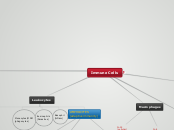Immune Cells
Mast Cells
Inflammatory
target of corticosteroids
Leukocytes
Neutrophils
Phagocyte
Inflammation
makes compliment
(as does liver)
Monocytes/MDM
(phagocytes)
Eosinophils
(Parasites)
Basophil
(Inflam)
LYMPHOCYTES
(adaptive immunity)
B Cell
VDJ recomb
Rag
AID1
Immunoglobulin
M: Complement activation
G: Opsinization, complement, passive immunity
E: Mast Degranulation - hypersensitivity
A: Mucosal immunity (passive)
Plasma B Cell
IgG
IgE
T Cell
(AIRE)
CD8+
Cytotoxic T cell
+ Macrophages
CD4+ (Th0)
APC: CD4/CD3 binding
Bact/Virus phag by proAPC,
which makes IFNg and IL12,
which binds to STAT4 on Th0
Th1
Cytokines
TNFa
IL2
GM-CSF
IFNg
Subtopic
Parasite/Allergen
IL-4 / STAT6
Th2
Cytokines
IL-10
IL-5
IL-4
TGFB
IL-13
no CD28
ANERGY
NK Cells
Macrophages
IL-12
(cellular)
IL-4
(humoral)
=
Main topic
CELLULAR IMMUNITY
Integrin
ICAM/VCAM (endothelium)
Allergy (type 4 DTH)
Poison Ivy
HUMORAL
AB
Allergy
RhIgG = Hemolytic Anemia
Subtopic
